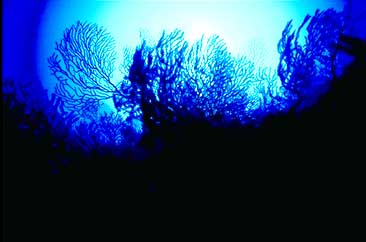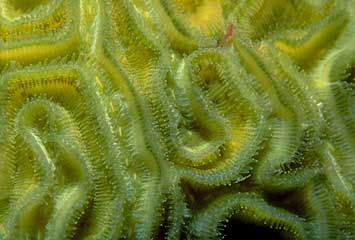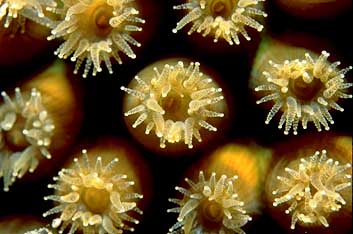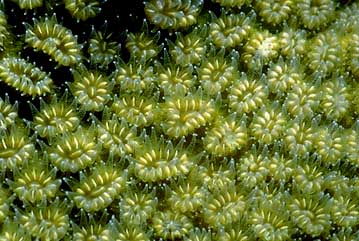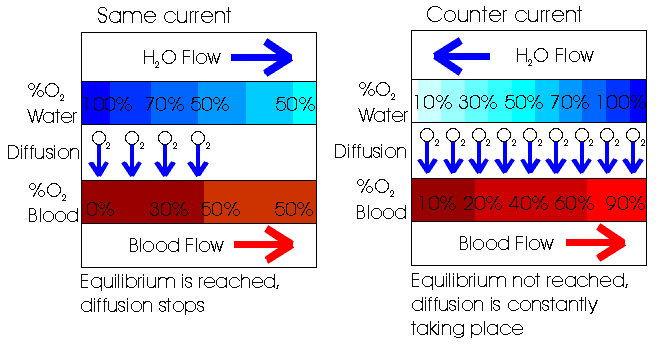|
|
Coral Reefs
Coral reefs are among the most ancient of ecosystem types, dating back to the Mesozoic era some 225 million years ago. Modern reefs can be as much as 2.5 million years old.
Although they cover only a tiny fraction (less than 0.2%) of the ocean's bottom, coral reefs capture about half of all the calcium flowing into the ocean every year, fixing it into calcium carbonate rock at very high rates. Coral reefs release carbon dioxide to the atmosphere due to the chemistry of calcium carbonate precipitation. The release of carbon dioxide from coral reefs is very small (probably less than 100 million tons of carbon per year) relative to emissions due to fossil fuel combustion (about 5.7 billion tons of carbon per year).
Coral reefs store very little organic carbon and are not very effective "sinks" for carbon dioxide from the atmosphere. Forests are more effective sinks for atmospheric carbon because they convert carbon dioxide into long-lived structures: trees.
Biological And Economic Values
Coral reefs are among the most biologically diverse ecosystems on the planet. Although tropical rainforests contain more species than coral reefs, reefs contain more phyla than rainforests. Phyla are large groupings of organisms that are thought to be related. Covering less than 0.2% of the ocean floor, coral reefs contain perhaps 1/4 of all marine species. New studies indicate that biodiversity on coral reefs may be even higher.
Despite their limited area, coral reefs may be home to up to 25% of the fish catch of developing countries or 10% of the total amount of fish caught globally for human consumption as food. Reefs are also extremely valuable as breakwaters and draws for tourism.
Threats
Coral reefs are among the most endangered ecosystems on earth. Coral reefs in 93 of the 109 countries containing them have been damaged or destroyed by human activities. In addition, human impacts may have directly or indirectly caused the death of 5-10% of the world's living reefs, and if the pace of destruction is maintained, another 60% could be lost in the next 20-40 years.
The most important short-term threats to coral reefs are sedimentation (from poor land use such as clearcutting on steep slopes and other activities such as dredging without silt curtains), eutrophication (over-fertilization caused by excessive fertilizer use and sewage pollution), and overfishing. Destructive fishing techniques such as fine mesh nets, cyanide poisoning, and dynamiting are common in coral reefs, and have actually come to dominate fishing in parts of Indonesia and the Philippines. Physical damage to coral reefs by scuba divers and tourists would probably be a minor threat if the number of visitors to reefs were limited to moderate levels and if water quality was always high enough to support rapid recovery of corals. However, tourism often results in large numbers of visitors, which leads to extensive physical damage, sewage pollution, and other adverse water quality impacts which slow or eliminate recovery.
Coral reefs in every major tropical region of the world bleached white during the mass bleaching events of the 1980's. This bleaching depresses coral growth rates and in some cases results in mass coral mortality and enormous aquatic population loss, and can even contribute to potential species extinctions. Bleaching is caused by a variety of factors, including siltation and changes in salinity resulting from poor land use, pollution, and slight increases in temperature. Coral reefs may bleach even more extensively if global warming continues unabated.


